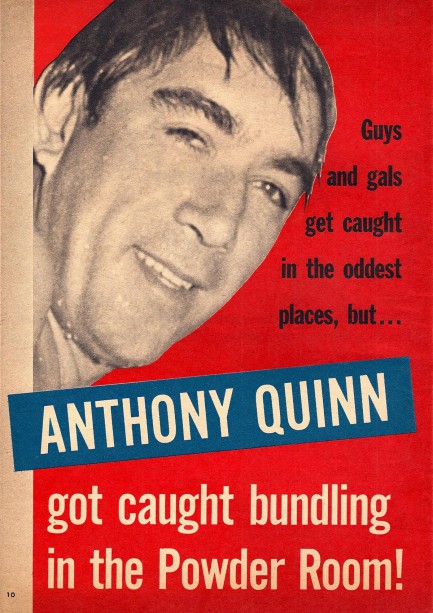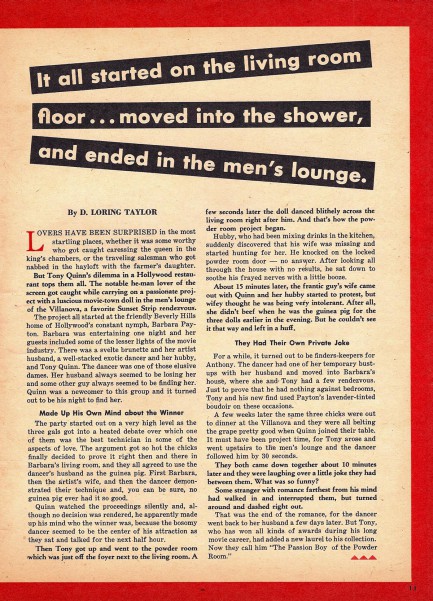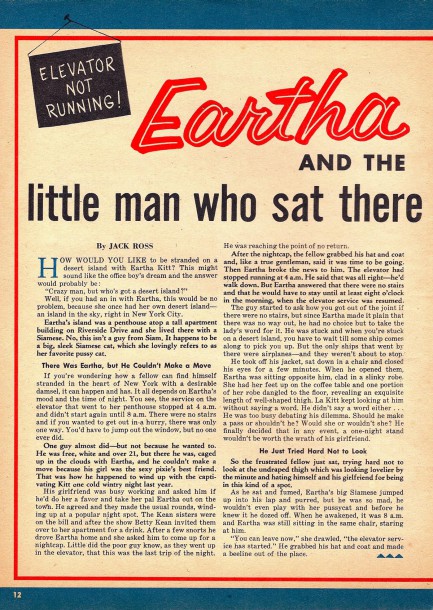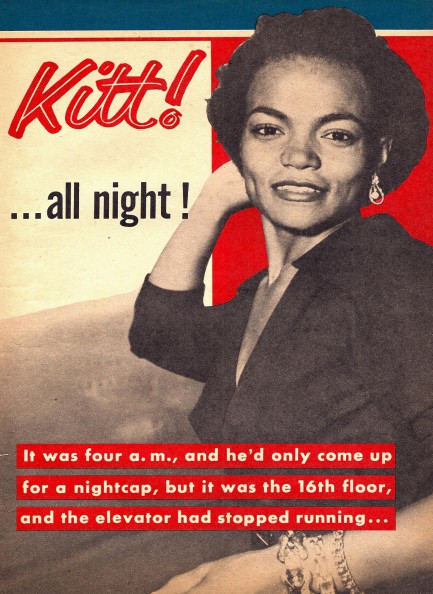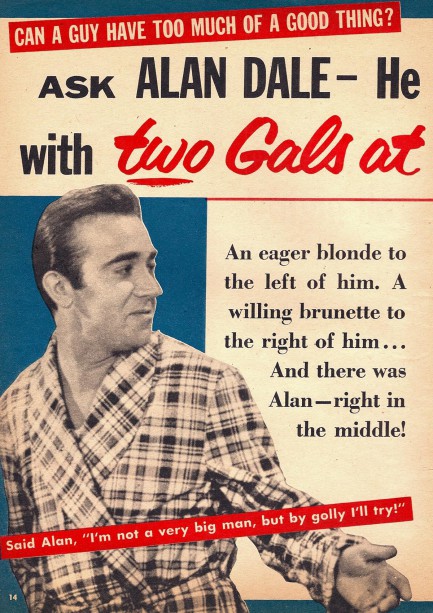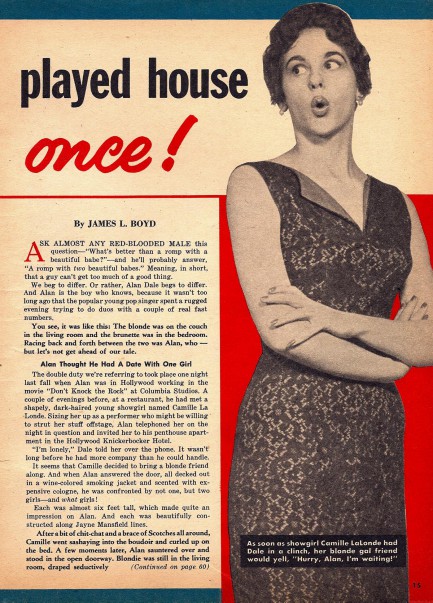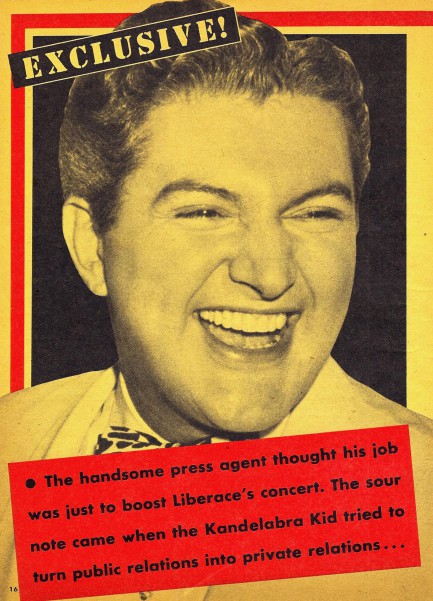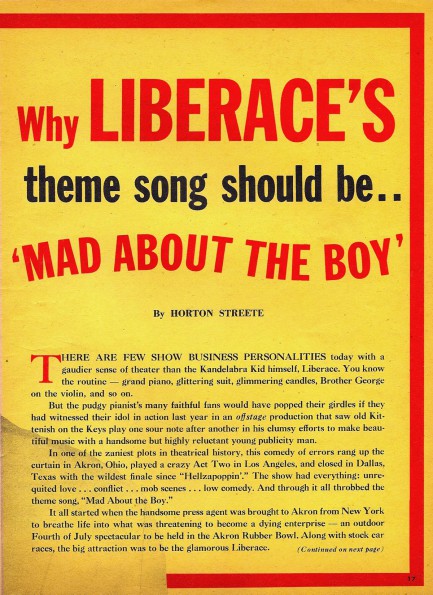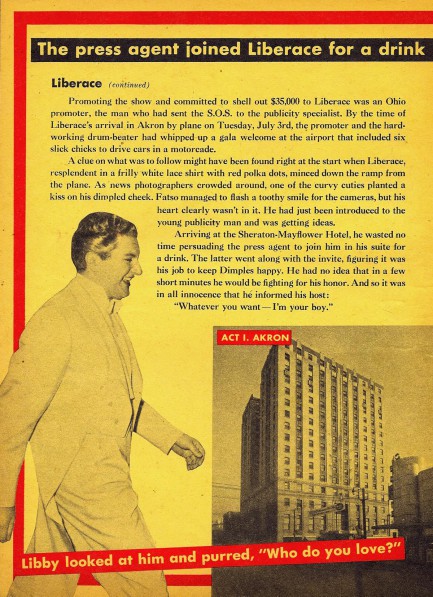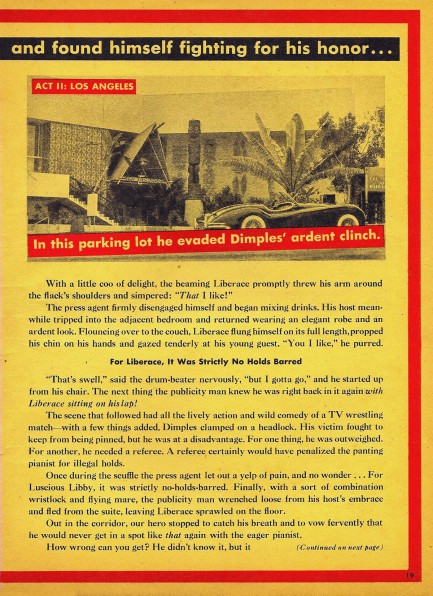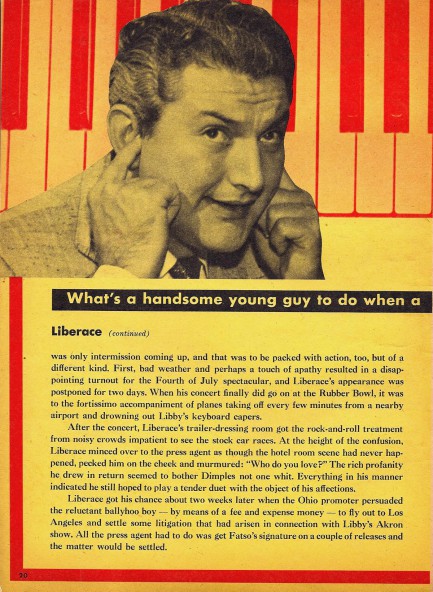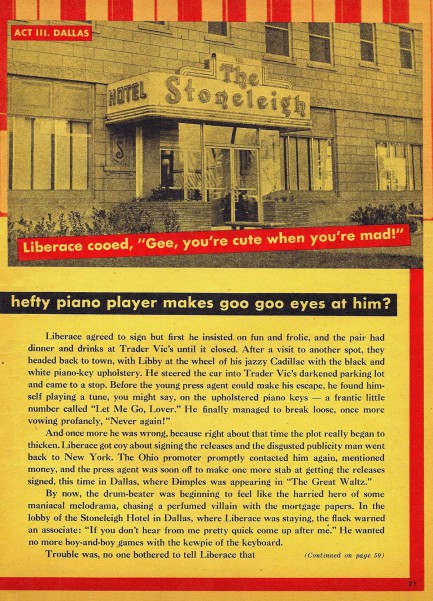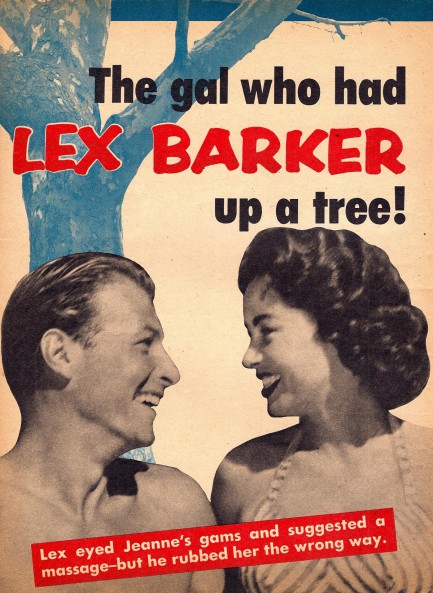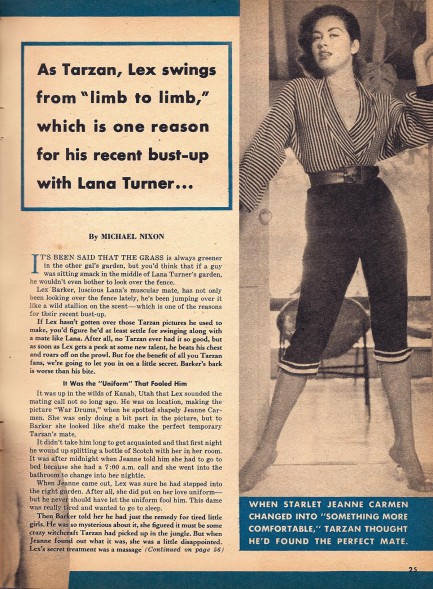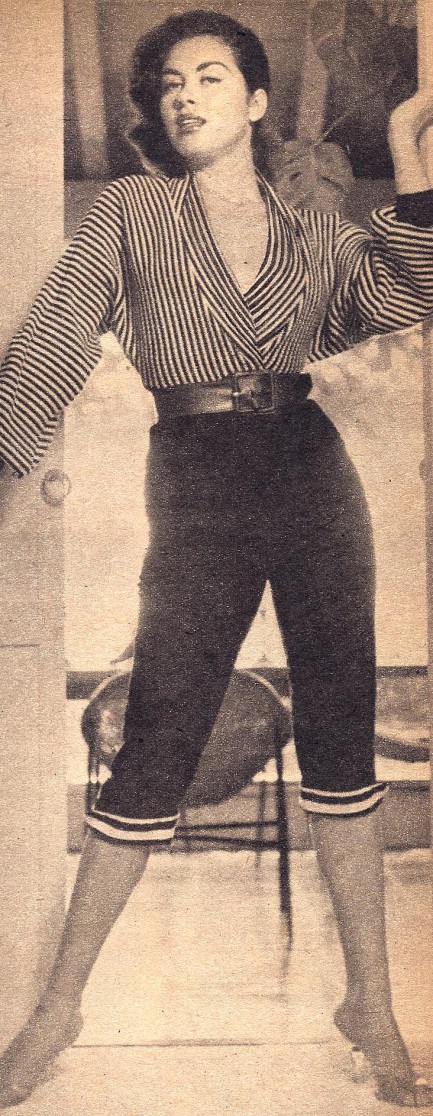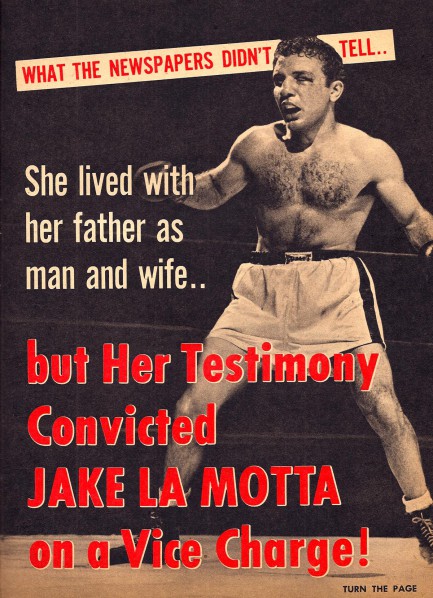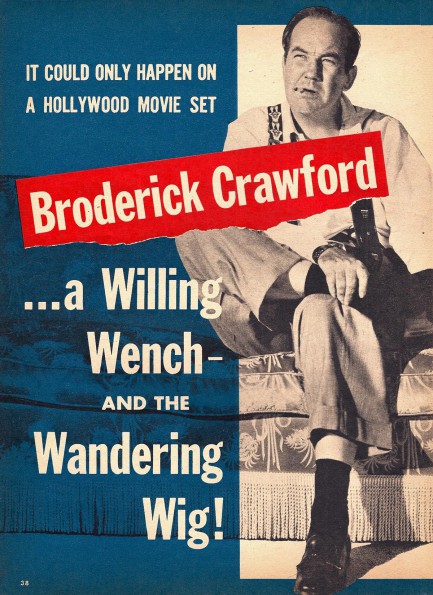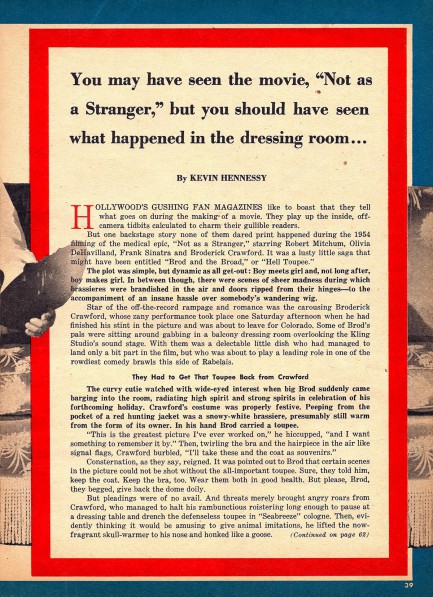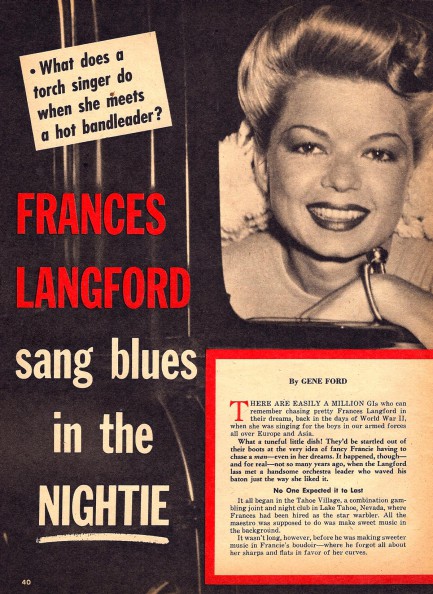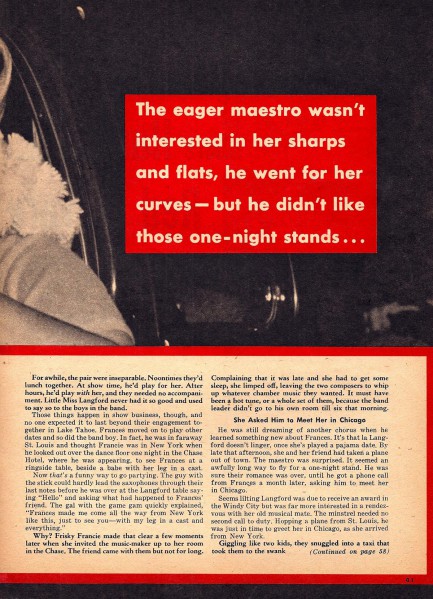| Vintage Pulp | Sep 12 2023 |

Think your boss is bad? Then you've never dealt with a mob boss.
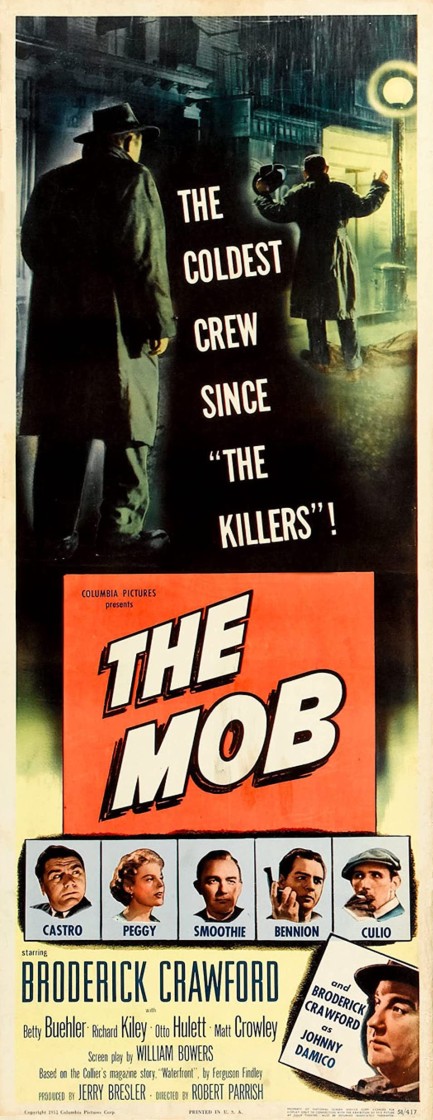
Falling into the category of pleasant surprises, The Mob, for which you see an evocative promo poster above, stars Broderick Crawford as a cop sent to infiltrate an organized crime syndicate. You've seen the idea before. He works his way up the ladder and brings the bad guys down, but this iteration comes with brisk pacing, a set of unpredictable twists, and a supporting cast that includes Ernest Borgine, Richard Kiley, and Lynn Baggett. If you keep your eyes open you might even spot Charles Bronson.
Crawford had already won an Academy Award and a Golden Globe for 1949's All the King's Men, so he unsurprisingly does a bang-up job in this film, instilling his deep cover cop with believable toughness and a gruff but relatable humanity. Crawford would later appear in such excellent films as Scandal Sheet, New York Confidential, Born Yesterday, and Human Desire, but The Mob may be his underrated classic.
The only flaw with this film, in our opinion, is a goofball denouement. We suppose, after ninety minutes of almost nonstop high tension, the filmmakers wanted audiences to leave smiling, and we're sure they did, because the scene, while dumb, is pretty funny. But in any case, we recommend giving The Mob a whirl. You'll enjoy it. It opened nationally in the U.S. in late September, but had its actual debut at special premiere today in Dayton, Ohio (why, we don't know) in 1951.
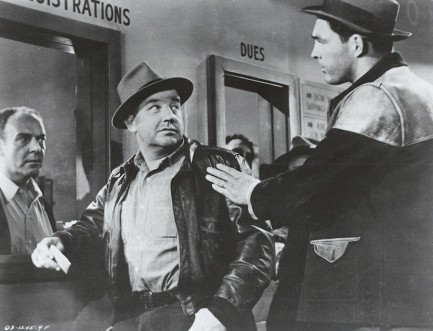
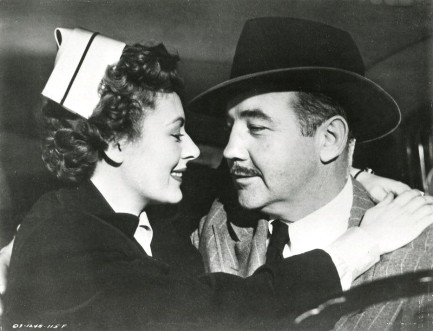
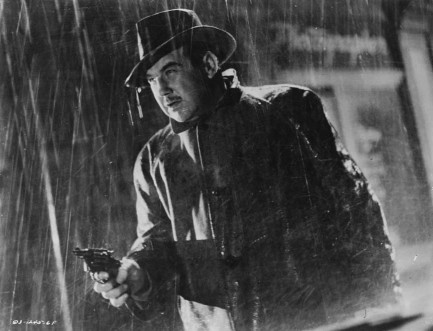
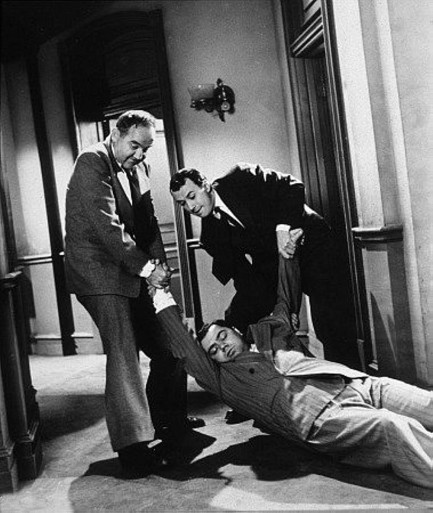
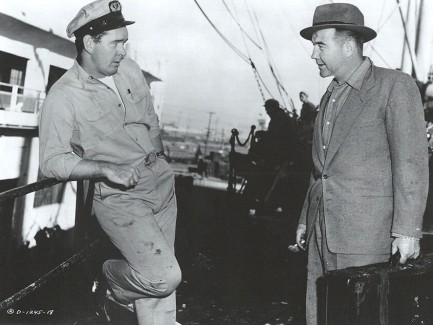
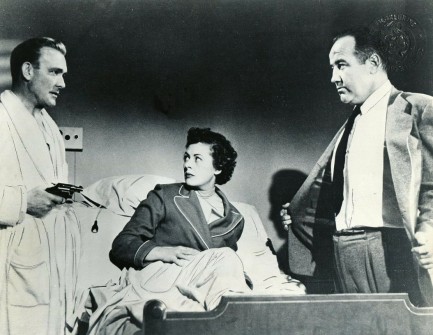
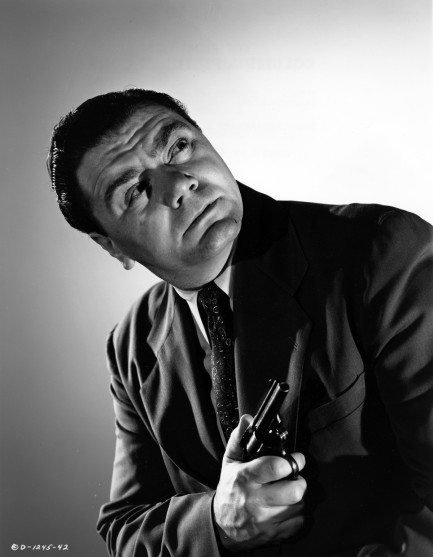
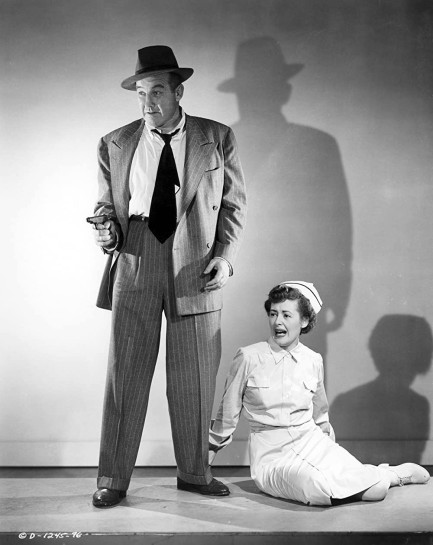








| Hollywoodland | Sep 9 2023 |

Movie stars were always willing to give each other a hand.
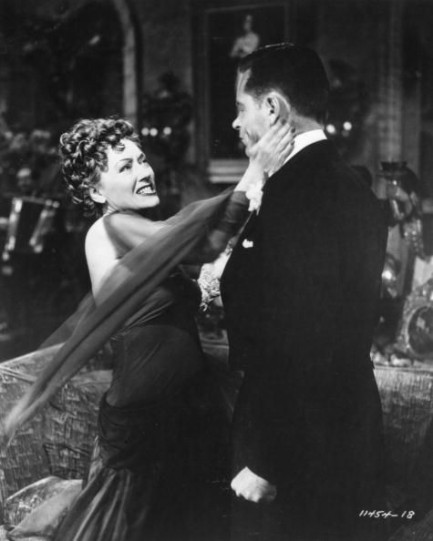
Once again we've been struck, so to speak, by the sheer number of cinema promo images featuring actors and actresses pretending to slap each other. They just keep turning up. The above shot is more about the neck than the face, but it still counts, as Gloria Swanson slaps William Holden in 1950's Sunset Boulevard. Below we have a bunch more, and you can see our previous collection at this link. Since we already discussed this phenomenon we won't get into it again, except briefly as follows: pretend slaps, film is not reality, and everyone should try to remember the difference. Many slaps below for your interest and wonder.
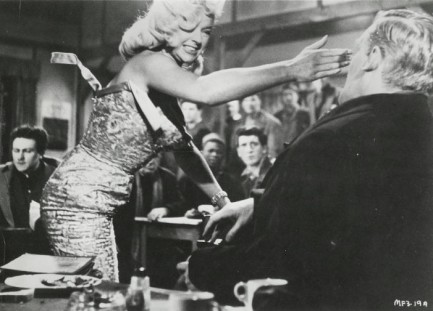
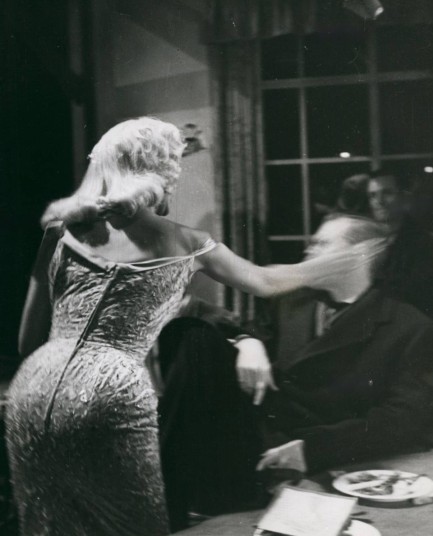 Diana Dors smacks Patrick Allen blurry in 1957's The Long Haul.
Diana Dors smacks Patrick Allen blurry in 1957's The Long Haul.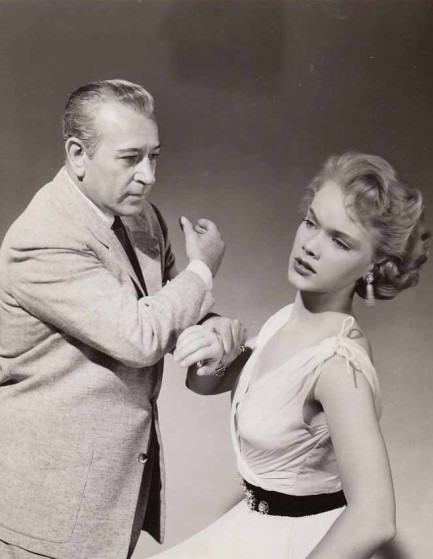 Mob boss George Raft menaces Anne Francis in a promo image made for 1954's Rogue Cop.
Mob boss George Raft menaces Anne Francis in a promo image made for 1954's Rogue Cop.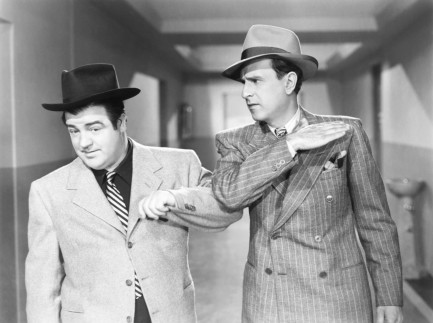 Bud Abbott gets aggressive with Lou Costello in 1945's Here Come the Co-Eds.
Bud Abbott gets aggressive with Lou Costello in 1945's Here Come the Co-Eds.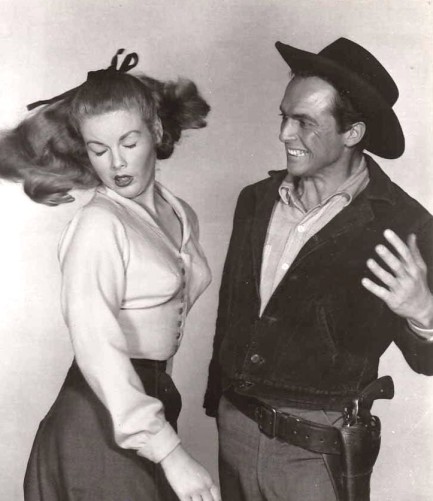 Jo Morrow takes one from black hat Jack Hogan in 1959's The Legend of Tom Dooley.
Jo Morrow takes one from black hat Jack Hogan in 1959's The Legend of Tom Dooley.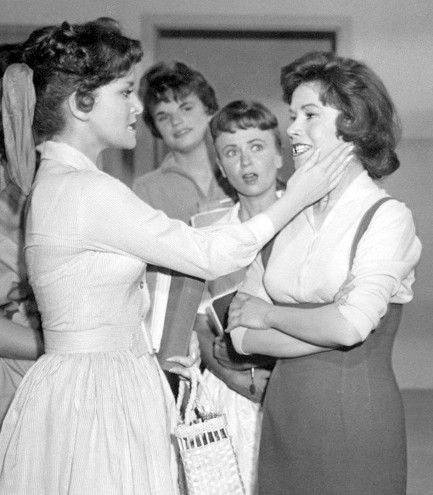 Chris Robinson and Anita Sands get a couple of things straight about who's on the yearbook committee in Diary of High School Bride.
Chris Robinson and Anita Sands get a couple of things straight about who's on the yearbook committee in Diary of High School Bride.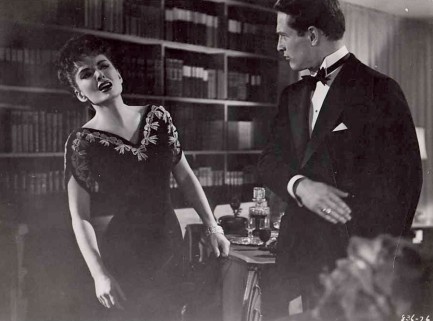 Paul Newman and Ann Blyth agree to disagree in 1957's The Helen Morgan Story.
Paul Newman and Ann Blyth agree to disagree in 1957's The Helen Morgan Story.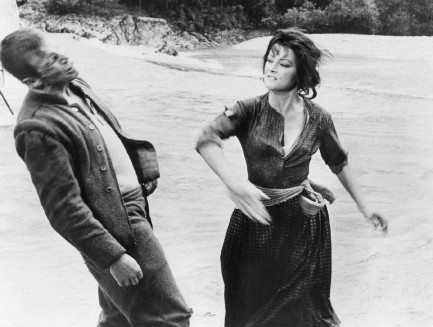 Verna Lisi shows Umberto Orsini who gives the orders in the 1967 film La ragazza e il generale, aka The Girl and the General.
Verna Lisi shows Umberto Orsini who gives the orders in the 1967 film La ragazza e il generale, aka The Girl and the General.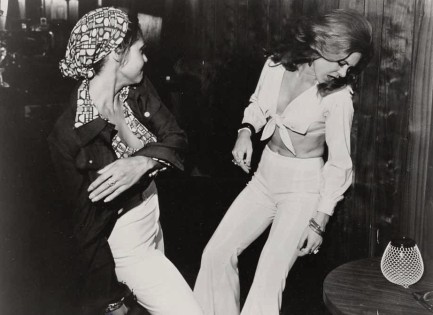 What the fuck did you just call me? Marki Bey slaps Betty Anne Rees loopy in the 1974 horror flick Sugar Hill.
What the fuck did you just call me? Marki Bey slaps Betty Anne Rees loopy in the 1974 horror flick Sugar Hill.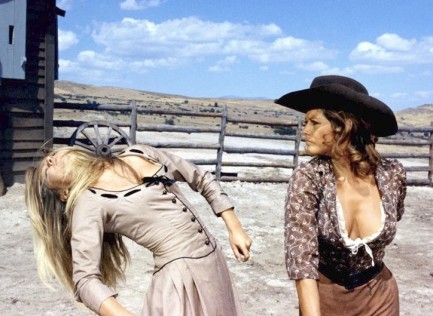 Claudia Cardinale slaps (or maybe punches—we can't remember) Brigitte Bardot in the 1971 western Les pétroleuses, known in English for some reason as The Legend of Frenchie King.
Claudia Cardinale slaps (or maybe punches—we can't remember) Brigitte Bardot in the 1971 western Les pétroleuses, known in English for some reason as The Legend of Frenchie King.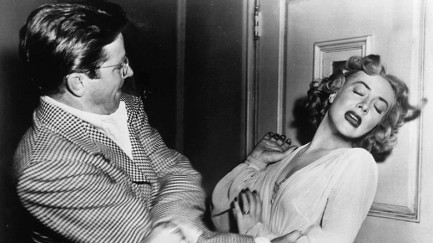 Audrey Totter reels under the attentions of Richard Basehart in 1949 Tension. We're thinking it was probably even more tense after this moment.
Audrey Totter reels under the attentions of Richard Basehart in 1949 Tension. We're thinking it was probably even more tense after this moment.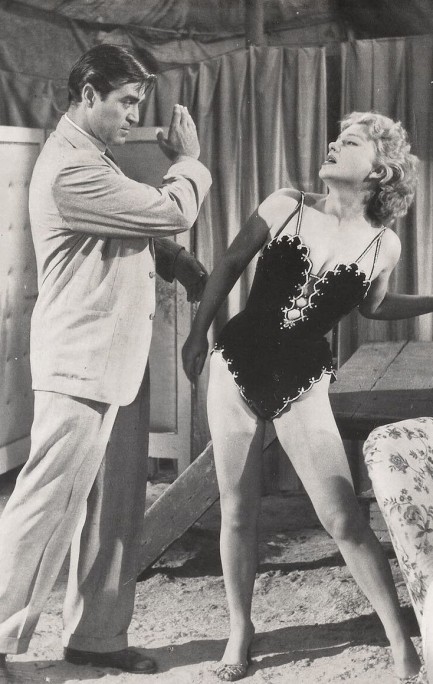 Anne Baxter tries to no avail to avoid a slap from heel Steve Cochran in 1954's Carnival Story.
Anne Baxter tries to no avail to avoid a slap from heel Steve Cochran in 1954's Carnival Story.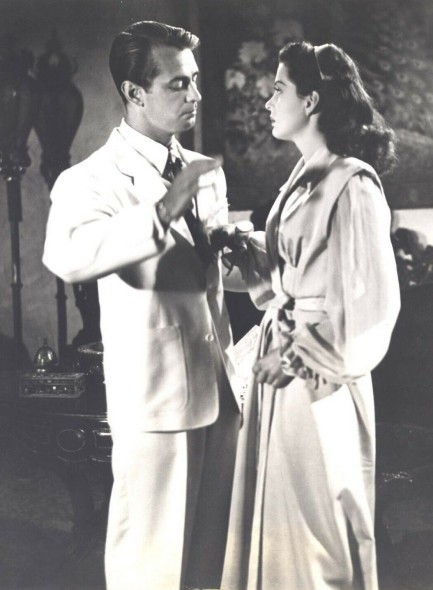
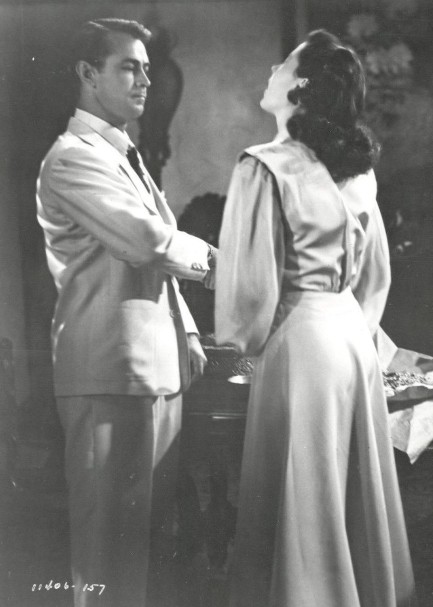 Though Alan Ladd was a little guy who Gail Russell probably could have roughed up if she wanted, the script called for him to slap her, and he obeyed in the 1946 adventure Calcutta.
Though Alan Ladd was a little guy who Gail Russell probably could have roughed up if she wanted, the script called for him to slap her, and he obeyed in the 1946 adventure Calcutta.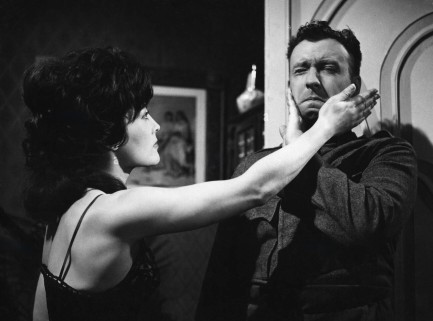 Peter Alexander guards his right cheek, therefore Hannelore Auer crosses him up and attacks his left in 1964's Schwejk's Flegeljahre, aka Schweik's Years of Indiscretion.
Peter Alexander guards his right cheek, therefore Hannelore Auer crosses him up and attacks his left in 1964's Schwejk's Flegeljahre, aka Schweik's Years of Indiscretion.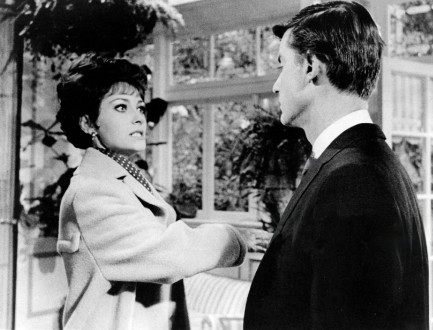 Elizabeth Ashley gives Roddy McDowall a facial in in 1965's The Third Day.
Elizabeth Ashley gives Roddy McDowall a facial in in 1965's The Third Day.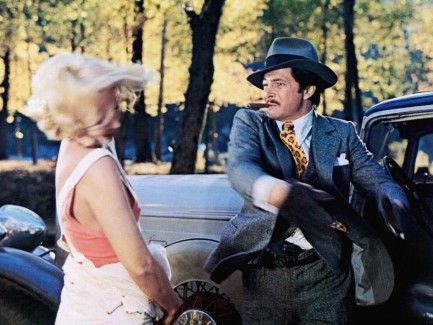 Tony Anthony slaps Lucretia Love in 1972's Piazza pulita, aka Pete, Pearl and the Pole.
Tony Anthony slaps Lucretia Love in 1972's Piazza pulita, aka Pete, Pearl and the Pole.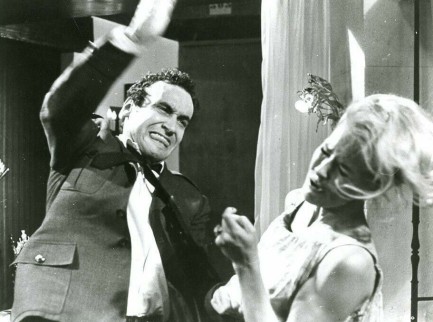 André Oumansky goes backhand on Lola Albright in 1964's Joy House.
André Oumansky goes backhand on Lola Albright in 1964's Joy House.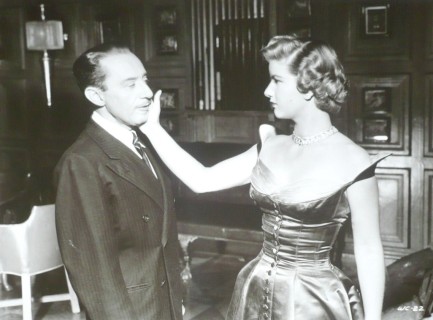 Frank Ferguson catches one from Barbara Bel Geddes in the 1949 drama Caught.
Frank Ferguson catches one from Barbara Bel Geddes in the 1949 drama Caught.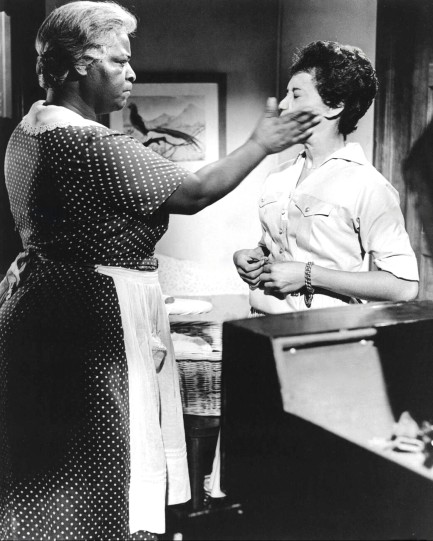 This looks like a real slap, so you have to credit the actresses for their commitment. It's from 1961's Raisin in the Sun and shows Claudia McNeil rearranging the face of Diana Sands.
This looks like a real slap, so you have to credit the actresses for their commitment. It's from 1961's Raisin in the Sun and shows Claudia McNeil rearranging the face of Diana Sands.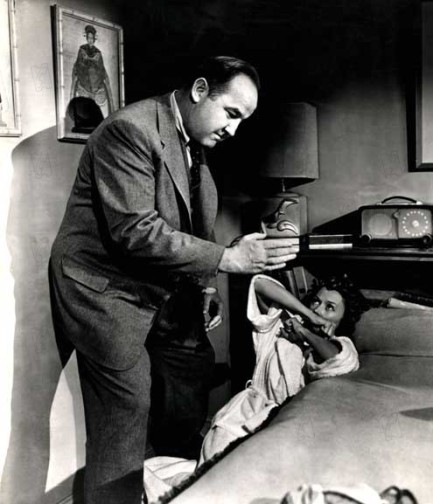 Gloria Grahame finds herself cornered by Broderick Crawford in 1954's Human Desire.
Gloria Grahame finds herself cornered by Broderick Crawford in 1954's Human Desire.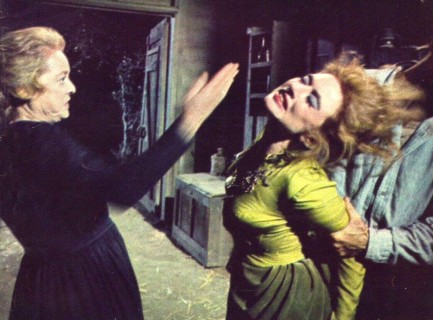 Bette Davis, an experienced slapper and slappee, gets a little assistance from an unidentified third party as she goes Old West on Amanda Blake in a 1966 episode of Gunsmoke called “The Jailer.”
Bette Davis, an experienced slapper and slappee, gets a little assistance from an unidentified third party as she goes Old West on Amanda Blake in a 1966 episode of Gunsmoke called “The Jailer.”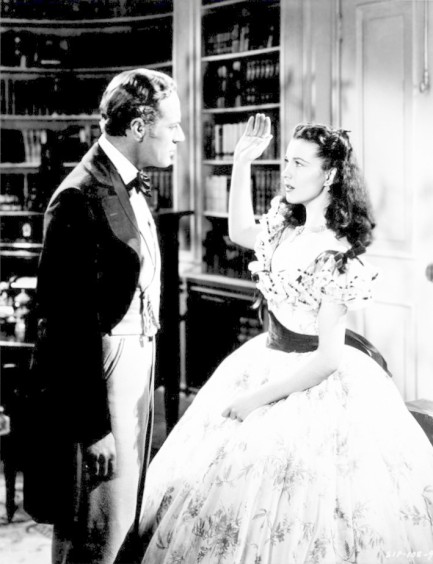 There are a few slaps in 1939's Gone with the Wind, so we had our pick. We went with Vivien Leigh and Leslie Howard.
There are a few slaps in 1939's Gone with the Wind, so we had our pick. We went with Vivien Leigh and Leslie Howard.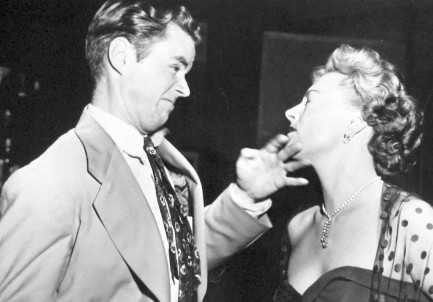 Virginia Field takes one on the chin from Marshall Thompson in Dial 1119.
Virginia Field takes one on the chin from Marshall Thompson in Dial 1119.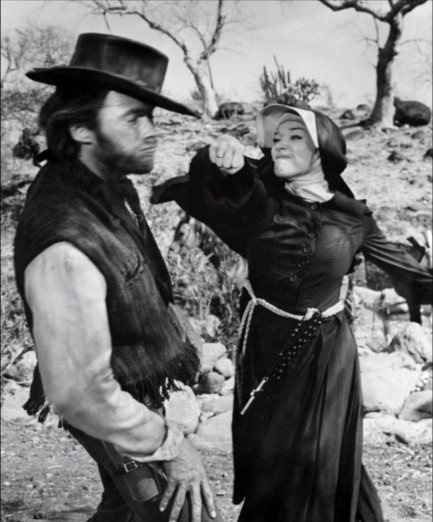 Clint Eastwood absorbs a right cross from nun Shirley MacLaine in 1970's Two Mules for Sister Sara.
Clint Eastwood absorbs a right cross from nun Shirley MacLaine in 1970's Two Mules for Sister Sara.Sunset BoulevardThe Long HaulRogue CopHere Come the Co-EdsThe Legend of Tom DooleyDiary of High School BrideThe Helen Morgan StoryLa ragazza e il generaleThe Girl and the GeneralSugar HillLes pétroleusesThe Legend of Frenchie KingTensionCarnival StoryCalcuttaSchwejk's FlegeljahreSchweik's Years of IndiscretionThe Third DayJoy HouseCaughtHuman DesireGunsmokeGone with the WindDial 1119Gloria SwansonWilliam HoldenDiana DorsPatrick AllenBud AbbottLou CostelloJo MorrowJack HoganChris RobinsonAnita SandsVirna LisiUmberto OrsiniMarki BeyBetty Anne ReesClaudia CardinaleBrigitte BardotRichard BasehartAudrey TotterAnne BaxterSteve CochranAlan LaddGail RussellHannelore AuerPeter AlexanderElizabeth AshleyRoddy McDowallAndré OumanskyLola AlbrightFrank FergusonBarbara Bel GeddesClaudia McNeilDiana SandsBroderick CrawfordGloria GrahameBette DavisAmanda BlakeVivien LeighLeslie HowardVirginia FieldMarshall ThompsonClint EastwoodShirley MacLainecinematelevision
| Hollywoodland | May 22 2021 |

It's shocking how many Hollywood stars did smack.
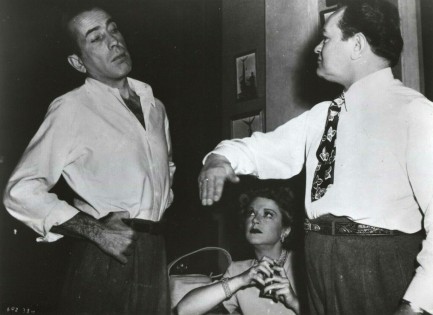
Everybody wants to slap somebody sometime. Luckily, actors in movies do it so you don't have to. The above shot is a good example. Edward G. Robinson lets Humphrey Bogart have it in 1948's Key Largo, as Claire Trevor looks on. In vintage cinema, people were constantly slapping. Men slapped men, men slapped women, women slapped women, and women slapped men. The recipient was usually the protagonist because—though some readers may not realize this—even during the ’40s and 50s, slapping was considered uncouth at a minimum, and downright villainous at worst, particularly when men did it. So generally, bad guys did the slapping, with some exceptions. Glenn Ford slaps Rita Hayworth in Gilda, for example, out of humiliation. Still wrong, but he wasn't the film's villain is our point. Humphrey Bogart lightly slaps Martha Vickers in The Big Sleep to bring her out of a drug stupor. He's like a doctor. Sort of.
In any case, most cinematic slapping is fake, and when it wasn't it was done with the consent of the participants (No, really slap me! It'll look more realistic.). There are some famous examples of chipped teeth and bloody noses deriving from the pursuit of realism. We can envision a museum exhibit of photos like these, followed by a lot of conversation around film, social mores, masculinity, and their intersection. We can also envison a conversation around the difference between fantasy and reality. There are some who believe portryals of bad things endorse the same. But movies succeed largely by thrilling, shocking, and scaring audiences, which requires portraying thrilling, shocking, and frightening moments. If actors can't do that, then ultimately movies must become as banal as everyday llife. Enjoy the slapfest.
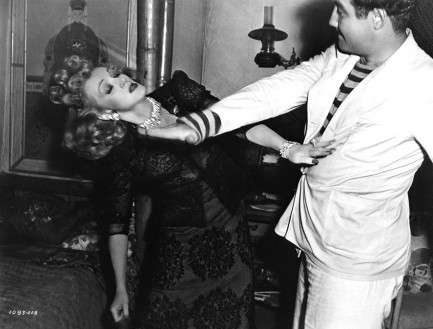 Broderick Crawford slaps Marlene Dietrich in the 1940's Seven Sinners.
Broderick Crawford slaps Marlene Dietrich in the 1940's Seven Sinners.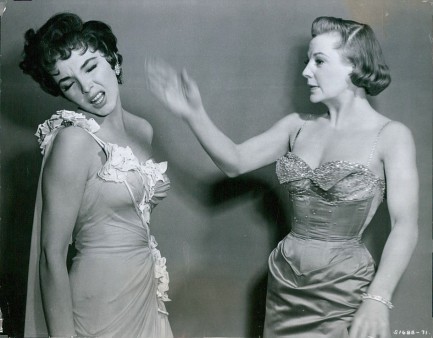 June Allyson lets Joan Collins have it across the kisser in a promo image for The Opposite Sex, 1956.
June Allyson lets Joan Collins have it across the kisser in a promo image for The Opposite Sex, 1956.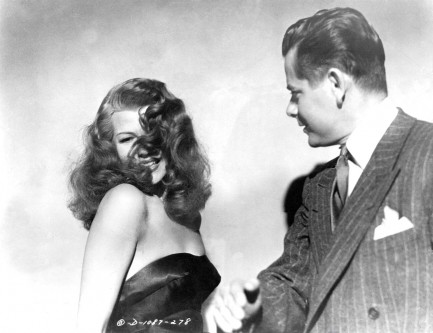 Speaking of Gilda, here's one of Glenn Ford and Rita Hayworth re-enacting the slap heard round the world. Hayworth gets to slap Ford too, and according to some accounts she loosened two of his teeth. We don't know if that's true, but if you watch the sequence it is indeed quite a blow. 100% real. We looked for a photo of it but had no luck.
Speaking of Gilda, here's one of Glenn Ford and Rita Hayworth re-enacting the slap heard round the world. Hayworth gets to slap Ford too, and according to some accounts she loosened two of his teeth. We don't know if that's true, but if you watch the sequence it is indeed quite a blow. 100% real. We looked for a photo of it but had no luck.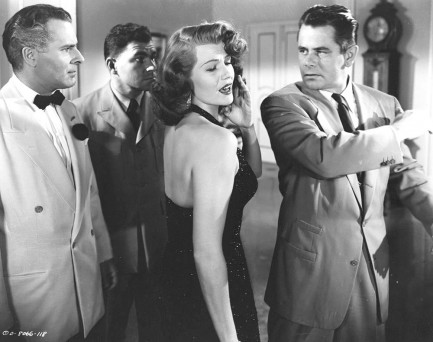 Don't mess with box office success. Ford and Hayworth did it again in 1952's Affair in Trinidad.
Don't mess with box office success. Ford and Hayworth did it again in 1952's Affair in Trinidad.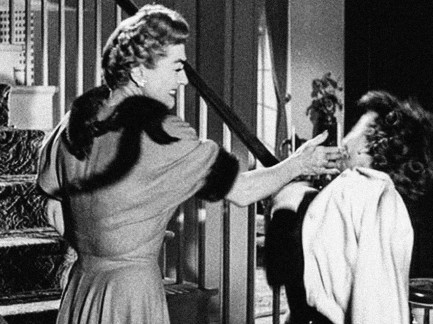 All-time film diva Joan Crawford gets in a good shot on Lucy Marlow in 1955's Queen Bee.
All-time film diva Joan Crawford gets in a good shot on Lucy Marlow in 1955's Queen Bee.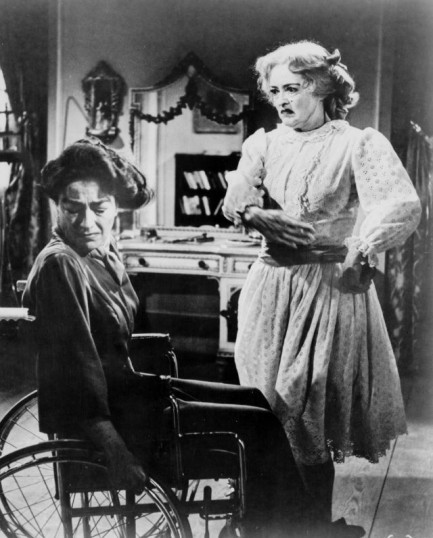 The answer to the forthcoming question is: She turned into a human monster, that's what. Joan Crawford is now on the receiving end, with Bette Davis issuing the slap in Whatever Happened to Baby Jane? Later Davis kicks Crawford, so the slap is just a warm-up.
The answer to the forthcoming question is: She turned into a human monster, that's what. Joan Crawford is now on the receiving end, with Bette Davis issuing the slap in Whatever Happened to Baby Jane? Later Davis kicks Crawford, so the slap is just a warm-up.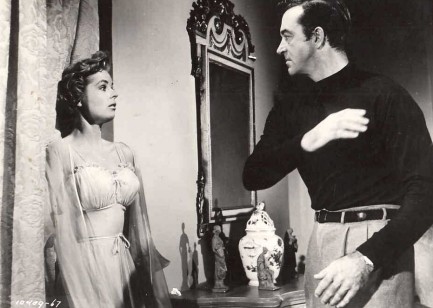 Mary Murphy awaits the inevitable from John Payne in 1955's Hell's Island.
Mary Murphy awaits the inevitable from John Payne in 1955's Hell's Island.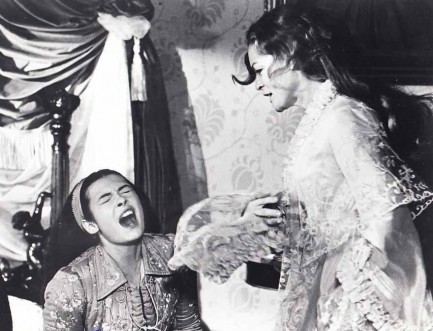 Romy Schneider slaps Sonia Petrova in 1972's Ludwig.
Romy Schneider slaps Sonia Petrova in 1972's Ludwig.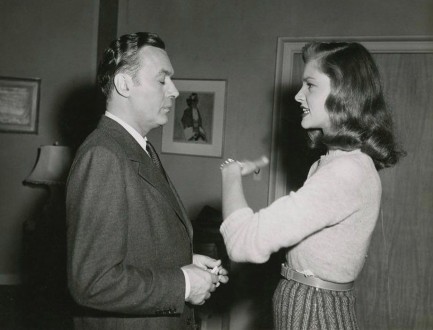 Lauren Bacall lays into Charles Boyer in 1945's Confidential Agent and garnishes the slap with a brilliant snarl.
Lauren Bacall lays into Charles Boyer in 1945's Confidential Agent and garnishes the slap with a brilliant snarl.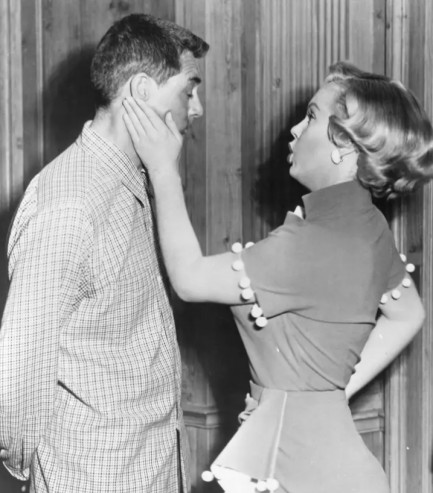 Iconic bombshell Marilyn Monroe drops a smart bomb on Cary Grant in the 1952 comedy Monkey Business.
Iconic bombshell Marilyn Monroe drops a smart bomb on Cary Grant in the 1952 comedy Monkey Business.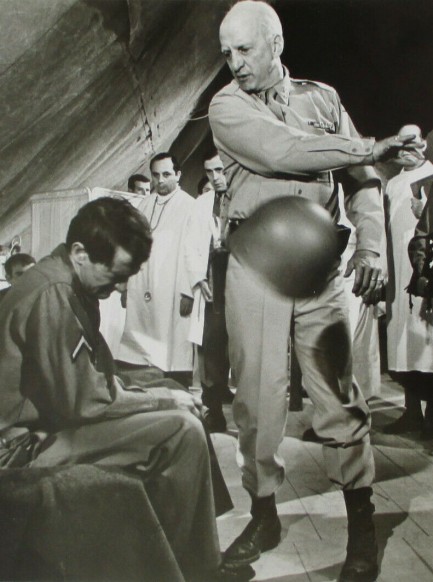 This is the most brutal slap of the bunch, we think, from 1969's Patton, as George C. Scott de-helmets an unfortunate soldier played by Tim Considine.
This is the most brutal slap of the bunch, we think, from 1969's Patton, as George C. Scott de-helmets an unfortunate soldier played by Tim Considine.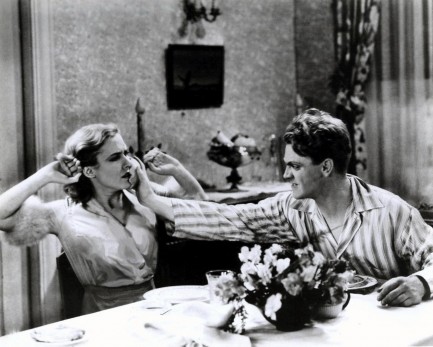 A legendary scene in filmdom is when James Cagney shoves a grapefruit in Mae Clark's face in The Public Enemy. Is it a slap? He does it pretty damn hard, so we think it's close enough. They re-enact that moment here in a promo photo made in 1931.
A legendary scene in filmdom is when James Cagney shoves a grapefruit in Mae Clark's face in The Public Enemy. Is it a slap? He does it pretty damn hard, so we think it's close enough. They re-enact that moment here in a promo photo made in 1931.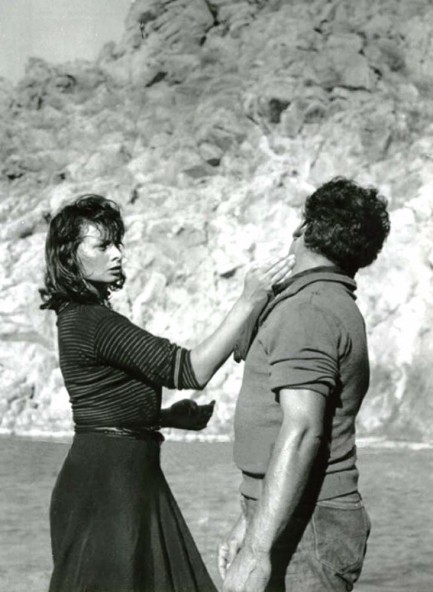 Sophia Loren gives Jorge Mistral a scenic seaside slap in 1957's Boy on a Dolphin.
Sophia Loren gives Jorge Mistral a scenic seaside slap in 1957's Boy on a Dolphin.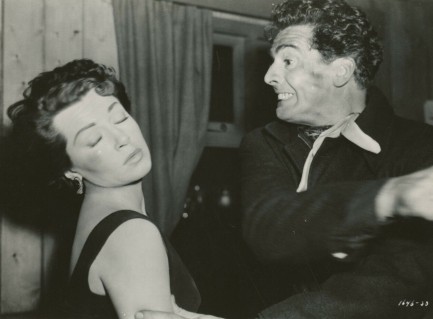 Victor Mature fails to live up to his last name as he slaps Lana Turner in 1954's Betrayed.
Victor Mature fails to live up to his last name as he slaps Lana Turner in 1954's Betrayed.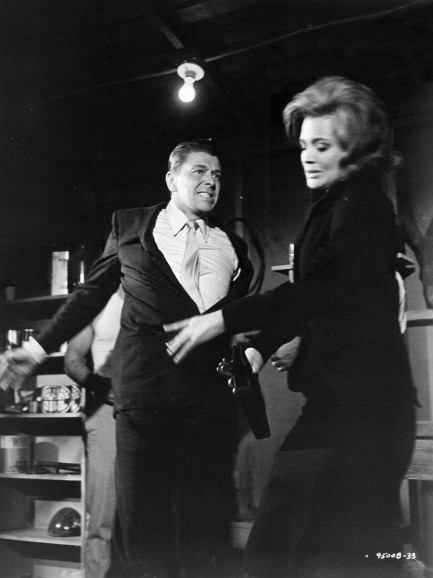 Ronald Reagan teaches Angie Dickinson how supply side economics work in 1964's The Killers.
Ronald Reagan teaches Angie Dickinson how supply side economics work in 1964's The Killers.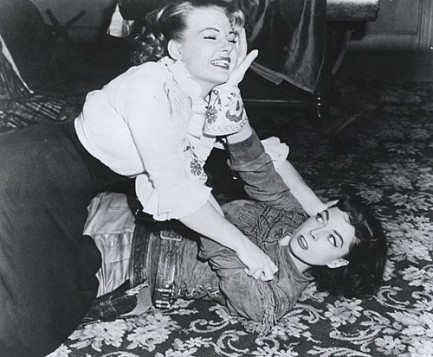 Marie Windsor gets in one against Mary Castle from the guard position in an episode of television's Stories of the Century in 1954. Windsor eventually won this bout with a rear naked choke.
Marie Windsor gets in one against Mary Castle from the guard position in an episode of television's Stories of the Century in 1954. Windsor eventually won this bout with a rear naked choke.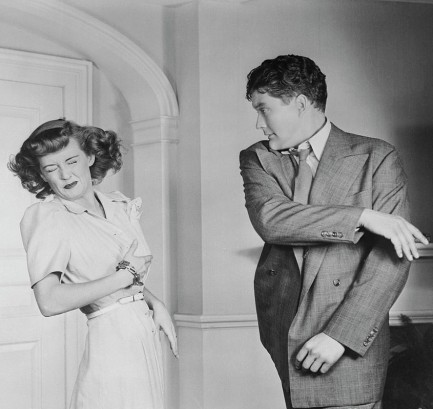 It's better to give than receive, but sadly it's Bette Davis's turn, as she takes one from Dennis Morgan in In This Our Life, 1942.
It's better to give than receive, but sadly it's Bette Davis's turn, as she takes one from Dennis Morgan in In This Our Life, 1942.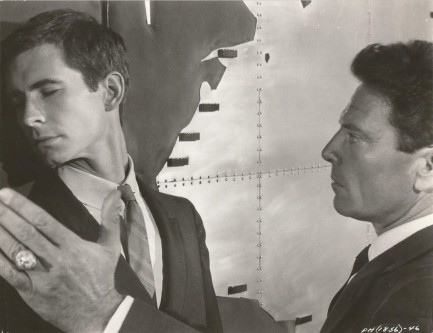 Anthony Perkins and Raf Vallone dance the dance in 1962's Phaedra, with Vallone taking the lead.
Anthony Perkins and Raf Vallone dance the dance in 1962's Phaedra, with Vallone taking the lead.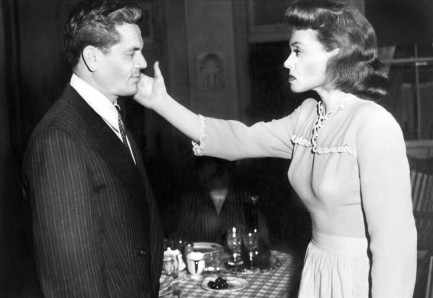 And he thought being inside the ring was hard. Lilli Palmer nails John Garfield with a roundhouse right in the 1947 boxing classic Body and Soul.
And he thought being inside the ring was hard. Lilli Palmer nails John Garfield with a roundhouse right in the 1947 boxing classic Body and Soul.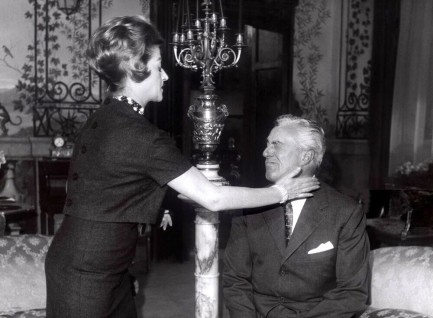 1960's Il vigile, aka The Mayor, sees Vittorio De Sica rebuked by a member of the electorate Lia Zoppelli. She's more than a voter in this—she's also his wife, so you can be sure he deserved it.
1960's Il vigile, aka The Mayor, sees Vittorio De Sica rebuked by a member of the electorate Lia Zoppelli. She's more than a voter in this—she's also his wife, so you can be sure he deserved it.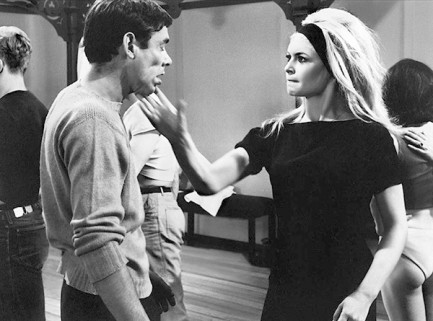 Brigitte Bardot delivers a not-so-private slap to Dirk Sanders in 1962's Vie privée, aka A Very Private Affair.
Brigitte Bardot delivers a not-so-private slap to Dirk Sanders in 1962's Vie privée, aka A Very Private Affair.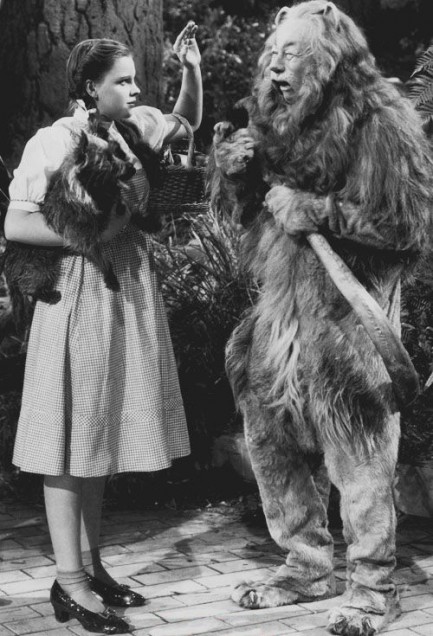 In a classic case of animal abuse. Judy Garland gives cowardly lion Bert Lahr a slap on the nose in The Wizard of Oz. Is it his fault he's a pussy? Accept him as he is, Judy.
In a classic case of animal abuse. Judy Garland gives cowardly lion Bert Lahr a slap on the nose in The Wizard of Oz. Is it his fault he's a pussy? Accept him as he is, Judy.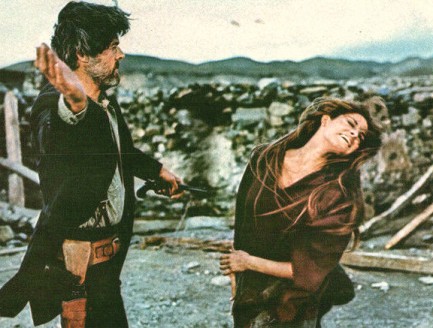 Robert Culp backhands Raquel Welch in 1971's Hannie Caudler.
Robert Culp backhands Raquel Welch in 1971's Hannie Caudler.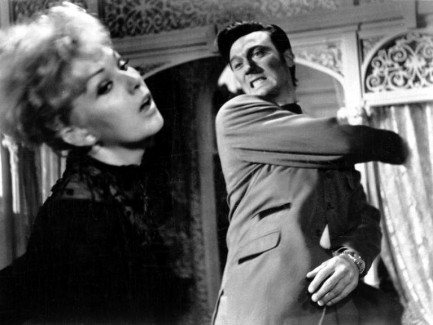 And finally, Laurence Harvey dares to lay hands on the perfect Kim Novak in Of Human Bondage.
And finally, Laurence Harvey dares to lay hands on the perfect Kim Novak in Of Human Bondage. Key LargoSeven SinnersThe Opposite SexGildaThe KillersWhatever Happened to Baby Jane?LudwigConfidential AgentPattonThe Public EnemyBoy on a DolphinOf Human BondageQueen BeeBetrayedStories of the CenturyIn This Our LifePhaedraBody and SoulIl vigileThe MayorThe Wizard of OzHannie CaulderVie privéeA Very Private AffairEdward G. RobinsonHumphrey BogartClaire TrevorMarlene DietrichBroderick CrawfordJune AllysonJoan CollinsGlenn FordRita HayworthBette FordJoan CrawfordMary MurphyJohn PayneRomy SchneiderSonia PetrovaLauren BacallCharles BoyerMarilyn MonroeCary GrantGeorge C. ScottTim ConsidineJames CagneyMae ClarkeSophia LorenJorge MistralJoan CrawfordLucy MarlowVictor MatureLana TurnerMarie WindsorMary CastleDennis MorganRaf ValloneAnthony PerkinsLilli PalmerJohn GarfieldLia ZoppelliKim NovakLaurence HarveyVittorio De SicaDirk SandersBrigitte BardotJudy GarlandBert LahrRaquel WelchRobert CulpRonald ReaganAngie Dickinson
| Vintage Pulp | Mar 3 2021 |

Stuck between the cops and a hard place.
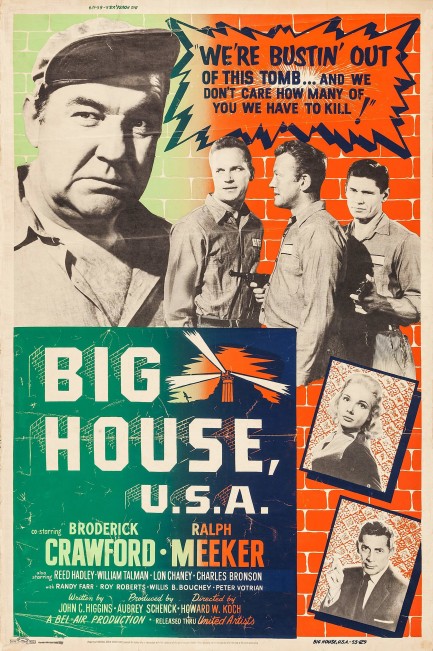
This poster was made to promote the drama Big House, U.S.A., which premiered today in 1955, and starred Ralph Meeker, who later headlined the classic film noir Kiss Me Deadly. He also starred in one of our favorite unknown films of all time, the television production Birds of Prey, which we may talk about at a later date. Big House is basically a procedural crime drama about how the cops try to break down a kidnapper and suspected murderer played by Meeker. His character is nicknamed Ice Man because he's cool under pressure. True to form the cops can't wring a confession from him, so he's sent to prison for lesser crimes and will be released in a short while.
Ice Man thinks he's got it made. Serve easy time, earn a quick parole, then quietly retrieve the heist loot waiting for him on the outside. But cons read the news too, and several decide they want his cash. They plan an escape, and they're going to drag Ice Man along against his will or kill him for refusing. And naturally, they have no intention of letting him survive handing over the money. What a pickle. Die now or die later. But once he's on the outside maybe—just maybe—there's a chance he can turn the tables on these con-conspirators.
Big House, U.S.A. is set in Denver and the surrounding Colorado countryside, and features some nice exteriors, but it's strictly a b-movie—poorly staged, cheesily scripted, and stuck together with baling wire and chewing gum. We mentioned Meeker's starring role in Kiss Me Deadly. That came out only a month after this movie, so it was a nice recovery for him. A couple of other notes of interest in Big House are that you get to see a young and fit Charles Bronson flashing his biceps—certainly a draw for some—and the legendary Lon Chaney, Jr. gets a role as a grizzled prison inmate. The overall result is certainly watchable, but there are better prison dramas out there, and hundreds of better vintage crime flicks.
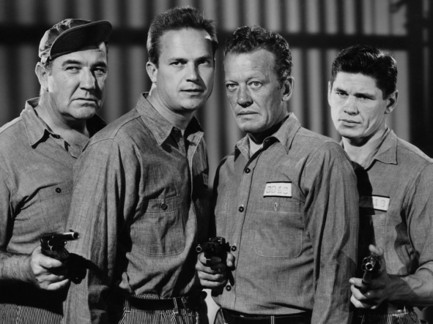 After we bust outta this joint, what do you say we form a boy band? Charles knows three guitar chords and I can sing.
After we bust outta this joint, what do you say we form a boy band? Charles knows three guitar chords and I can sing.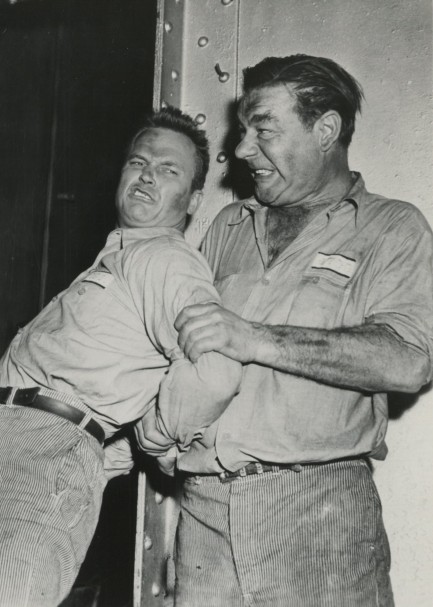 What are you mad at me for? Is it my fault the babes like singers best?
What are you mad at me for? Is it my fault the babes like singers best?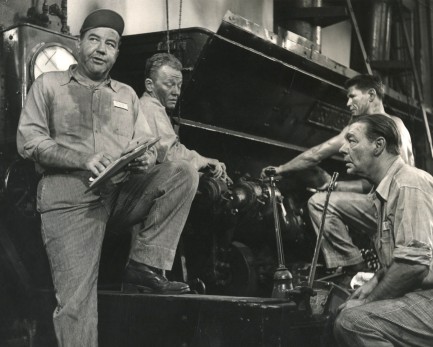 Fuck this. Between Meeker and Bronson I'm getting no action at all. I'm starting a solo career. I heard there's a thing called Auto-Tune that'll keep even my singing voice in pitch.
Fuck this. Between Meeker and Bronson I'm getting no action at all. I'm starting a solo career. I heard there's a thing called Auto-Tune that'll keep even my singing voice in pitch.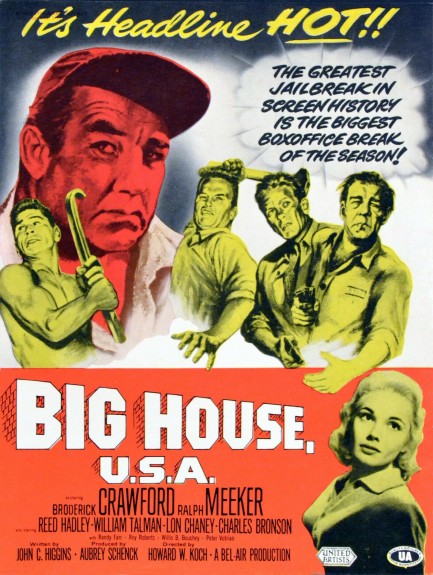
| Vintage Pulp | Aug 5 2016 |

Someone in the sleeping compartment isn't going to wake up.
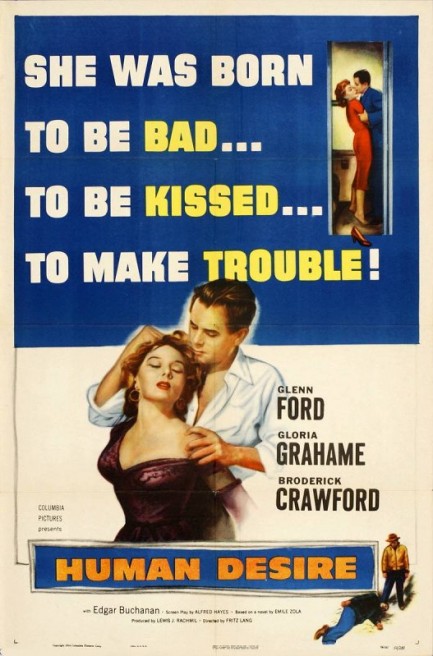
Film noir teaches us that anyone can get in too deep, even a railroad engineer. In Human Desire, Fritz Lang's retelling of Emile Zola's 1890 novel La Bête humaine, Glenn Ford finds himself trapped between lust for Gloria Grahame and reluctance to kill to have her. He's already helped her cover up another killing and gotten in the middle of blackmail plot, but every man has his limits. This is flawed but canonical noir, with a cocky Ford, a quirky Grahame, a brutish Broderick Crawford, and Kathleen Case playing the loyal gal pal, who for our money is much more alluring than Grahame. Ford figures that out too, eventually. Too bad his realization is sandwiched between two murders on his train. Human Desire premiered today in 1954.
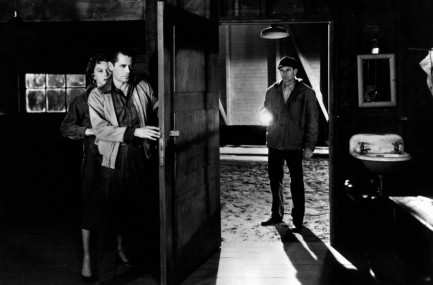
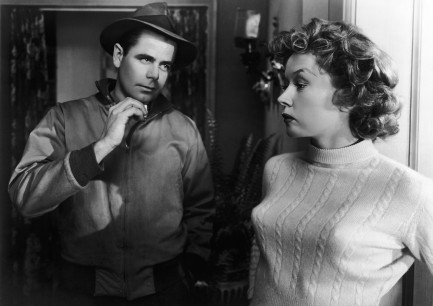
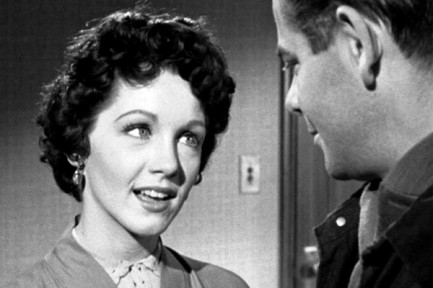
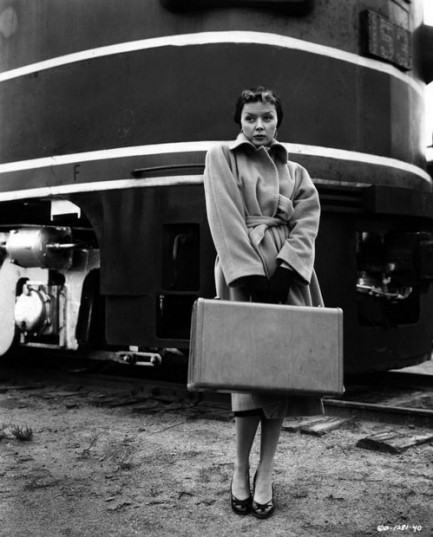
| Hollywoodland | Jul 16 2015 |

Liberace experiences tabloid wrath at its most merciless.
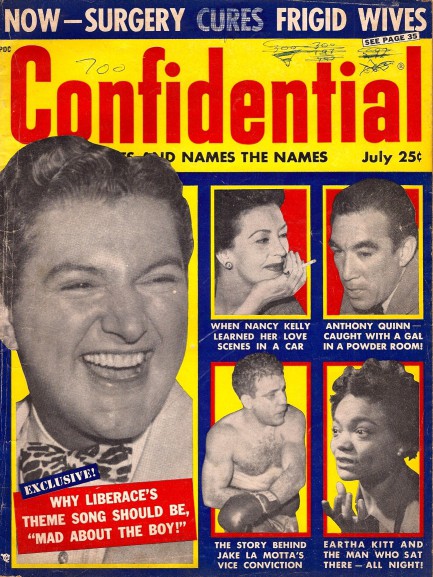
It was in this July 1957 issue of Confidential that journalist “Horton Streete’ infamously outed cover star Liberace in the most vicious and dehumanizing way with an article entitled “Why Liberace’s Theme Song Should Be ‘Mad About the Boy’.” We’ve talked about it before. Streete willfully attempted to damage the singer’s career by spinning a shocking tale of how he attacked a young, male press agent. The article refers to Liberace as Fatso, Pudgy, Dimples, and other, less flattering monikers.
Here’s a rule you can count on—when a journalist or on-air personality constantly refers to someone by other than his or her name or title, it’s a hit piece. Liberace was horrified and sued Confidential. California Attorney General Pat Brown had already managed to win an indictment of the magazine two months earlier. Owner Robert Harrison was about to spend his entire summer in court. He took these legal threats to heart and publicly promised to stop publishing stories about the private lives of Hollywood stars.
Up until then Confidential had been as reckless as a magazine could be. This issue accuses Gary Crosby of punching a woman in the face, and Eartha Kitt of trapping her friend’s boyfriend in her penthouse. An extraordinary story about boxer Jake LaMotta suggests the he got a bum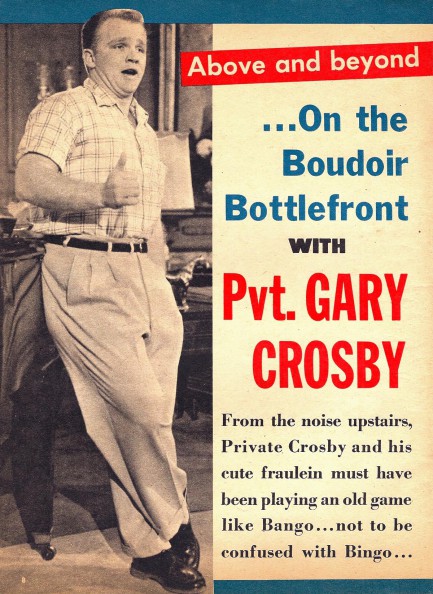
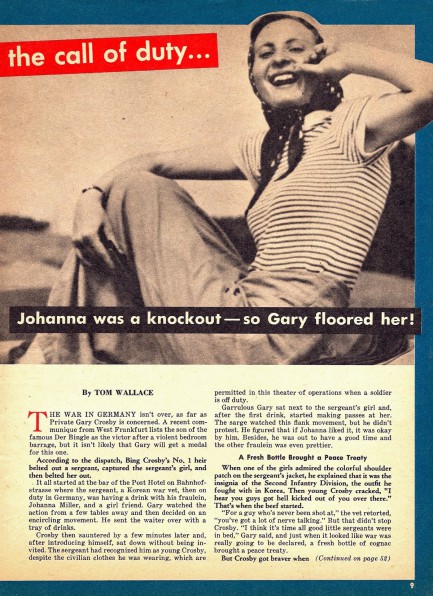 rap in his morals trial. LaMotta was serving time for bedding a 14-year-old. Prosecutors had convinced a jury that the incident with LaMotta was a primary cause of the girl later becoming a prostitute. Confidential rides to the rescue, claiming that the girl’s father had already deflowered her, therefore LaMotta could not have had any influence on the girl’s fate. How’s that for a principled stand?
rap in his morals trial. LaMotta was serving time for bedding a 14-year-old. Prosecutors had convinced a jury that the incident with LaMotta was a primary cause of the girl later becoming a prostitute. Confidential rides to the rescue, claiming that the girl’s father had already deflowered her, therefore LaMotta could not have had any influence on the girl’s fate. How’s that for a principled stand?

 rap in his morals trial. LaMotta was serving time for bedding a 14-year-old. Prosecutors had convinced a jury that the incident with LaMotta was a primary cause of the girl later becoming a prostitute. Confidential rides to the rescue, claiming that the girl’s father had already deflowered her, therefore LaMotta could not have had any influence on the girl’s fate. How’s that for a principled stand?
rap in his morals trial. LaMotta was serving time for bedding a 14-year-old. Prosecutors had convinced a jury that the incident with LaMotta was a primary cause of the girl later becoming a prostitute. Confidential rides to the rescue, claiming that the girl’s father had already deflowered her, therefore LaMotta could not have had any influence on the girl’s fate. How’s that for a principled stand?These early issues of Confidential are a cesspool of journalistic ethics, no doubt, but they’re also a visual treat. Using black, red, blue, and yellow, plus the white of the pages themselves, the designers put together a bold and gaudy package that would influence every other tabloid on the market. The layouts on Kitt, Liberace, Alan Dale, and Lex Barker are among the most eye-catching we’ve seen from the period. Elsewhere you get Anthony Quinn, and a host of other stars. We have a bunch of scans below. Remember, you can always see more from Confidential and other tabs by visiting our tabloid index at this link.
